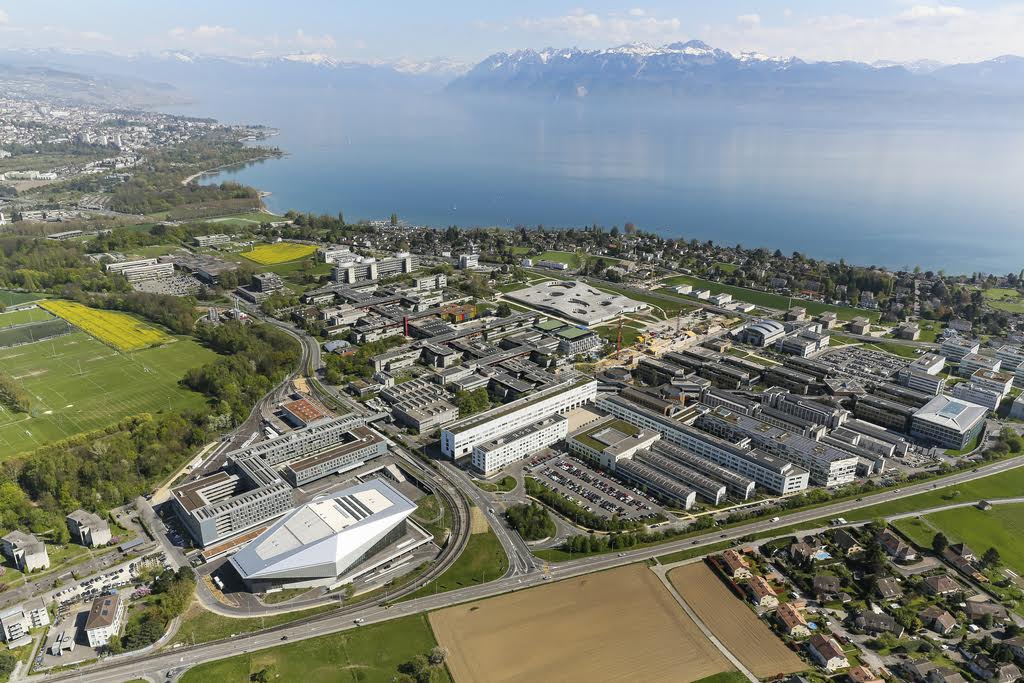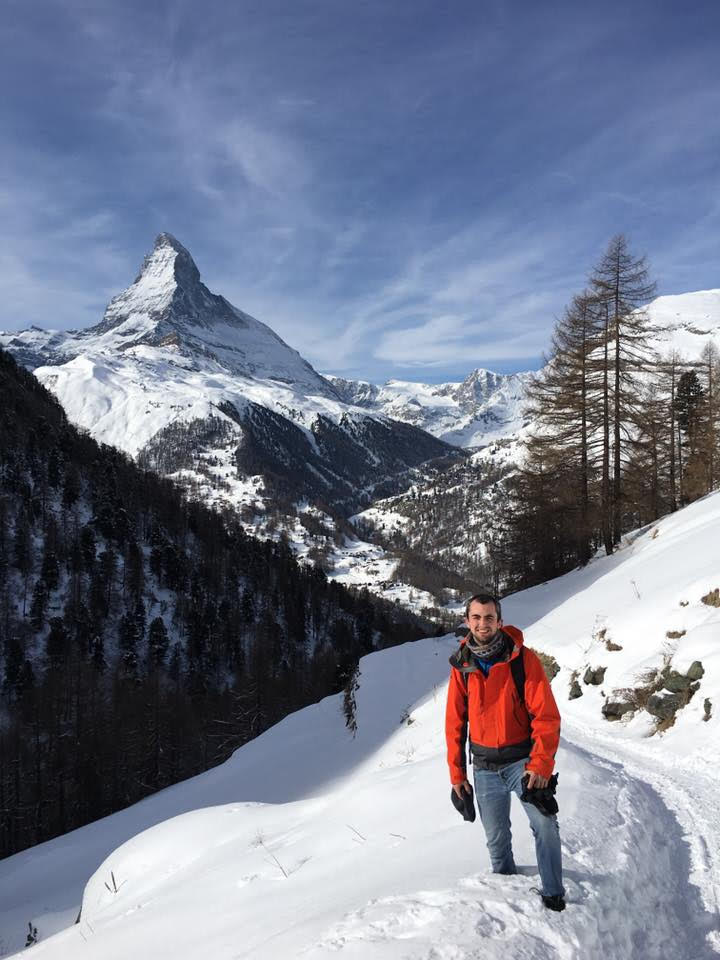Course on plasma diagnostics at EPFL - Switzerland
Report by Karol Jesko. Powered by FuseNet
Thanks to funding from FuseNet, I was able to attend the course “Diagnostics for basic plasma physics devices and tokamaks: from principles to practice”. It was organized by the Swiss Plasma Center (SPC) of the École polytecnique féderale de Lausanne (EPFL) in Lausanne, Vaud canton, Switzerland. This one week long enterprise (1st -5th February 2016) was given by the triumvirate comprising the researchers Ivo Furno, Holger Reimerdes and Benoit Labit. The SPC houses the well-known TCV tokamak and also the less known TORPEX device, which also has a toroidal geometry and is particularly useful for plasma turbulence studies. Of course, we visited both devices and even performed some shots on one of them!

Aerial view of the EPFL campus
Theory
The scope of the theoretical part was the following: We were given lectures about the theory and application of Langmuir probes, which have been (and still are) the work horse in measuring basic plasma parameters in tokamaks and also other devices for many decades. We learned that probes are relatively easy to make but that their interpretation is usually quite tricky. Next, we were introduced to the basics of magnetic measurements and to the zoo of all types of magnetic probes (one had to recall Maxwell’s equations for this :-) ) and their application in plasma control, equilibrium reconstruction and MHD mode detection in tokamaks. One lecture was devoted to an overview of plasma imaging diagnostics. We also learned a lot about general data analysis techniques using Fourier transform, time series statistics and more.
Experiments
The fun part, however, was that we performed measurements with Langmuir probe arrays on TORPEX ourselves. After plotting the data we could directly see the application of the theory from the lectures! In another practical session, we had to measure the transfer function of a magnetic pickup coil using a Helmholtz coil – in other words, we had to calibrate it. A large part of the course was devoted to exercise sessions, where we were provided with Matlab routines in order to visualize and play around with real experimental data from TCV. One of the main messages that I took home from the practical part was that we should ALWAYS look at the raw data before trying to do some sophisticated analysis – for example, fancy routines will yield some result even if signals from our ADCs are saturated.
Espressos and Croissants
The less fun part was that on Friday we had an exam. Luckily, our tutors were kind enough to take the short time that was available for preparation into consideration. Nevertheless, after the exam it was our turn to evaluate the tutors. For my part, I was very satisfied with the scope and format of the course and with the approach of our teachers. I also specially enjoyed the espressos and croissants at the expense of the SPC which helped to keep me focused :-).
Hiking through the Alps
Once I found myself in Switzerland on a Friday afternoon with the whole weekend in front of me, I couldn’t resist to hop on a train heading for the Swiss Alps. So I traveled to the mountain resort of Zermatt (for rail-fans, there is a pretty cool narrow gauge railway that takes you up to the village). On Saturday, I hiked up to Fluhalp, at the feet of the Findel glacier. The weather was perfect and I spent hours staring at the legendary Matterhorn (4478 m) which dominates the landscape.
I thank FuseNet again for making my participation at this course possible and the organizers from SPC for a very valuable experience!

Karol Jesko in the Alps close to Lausanne
